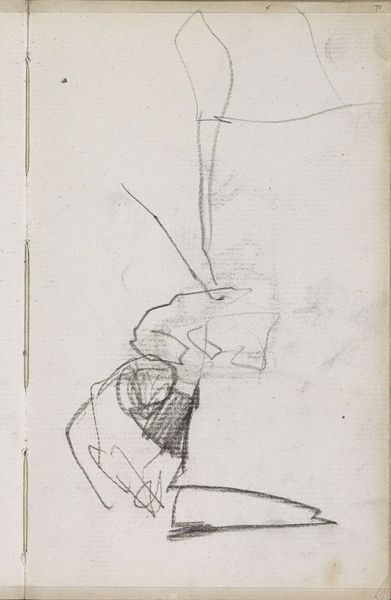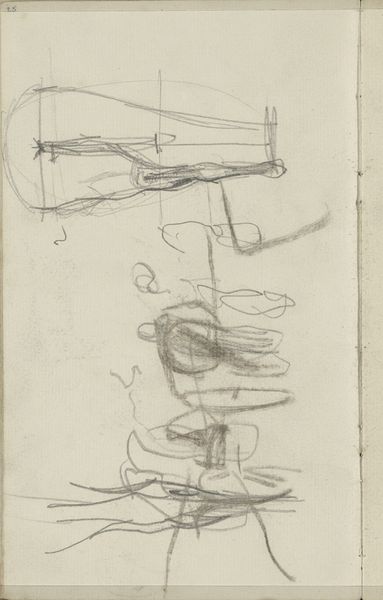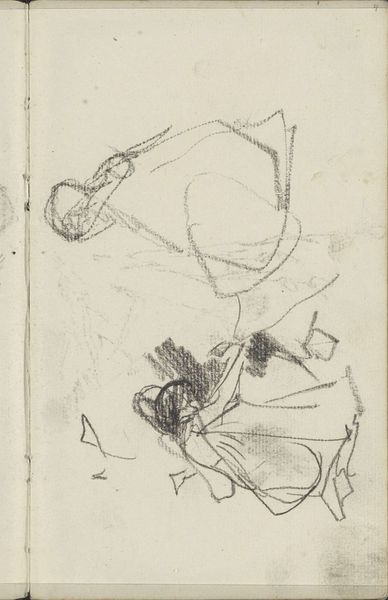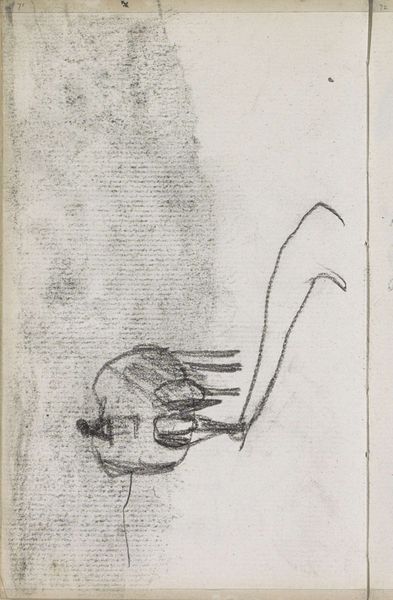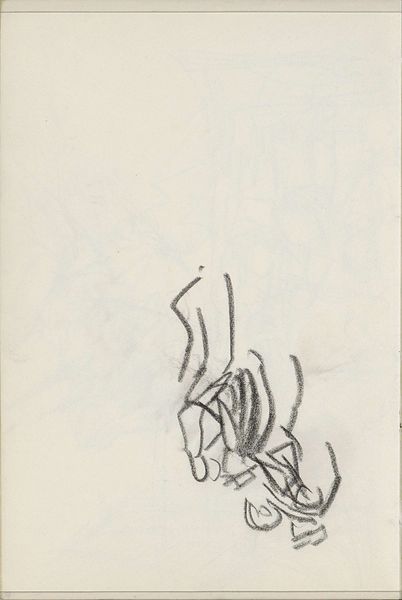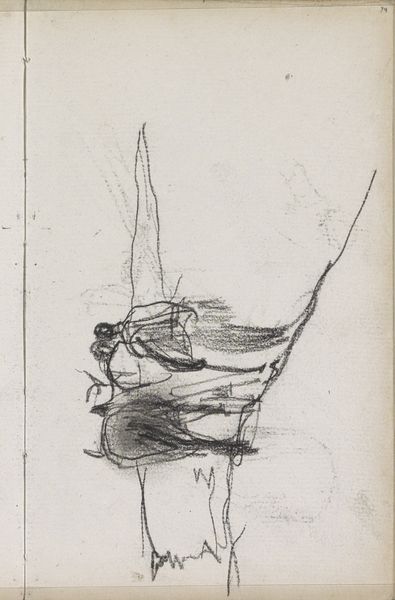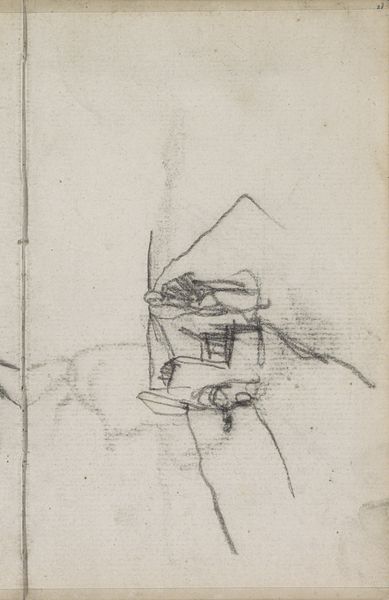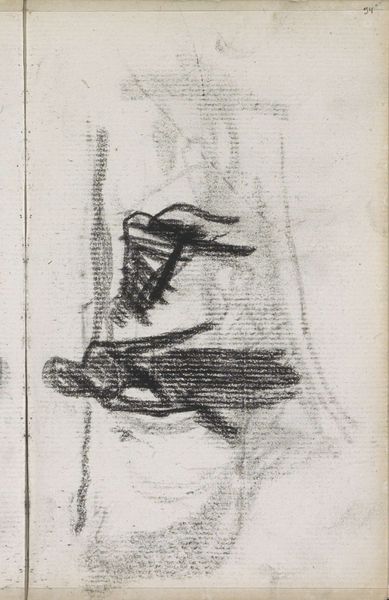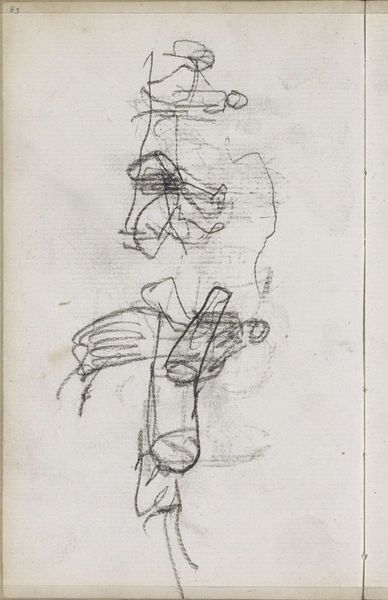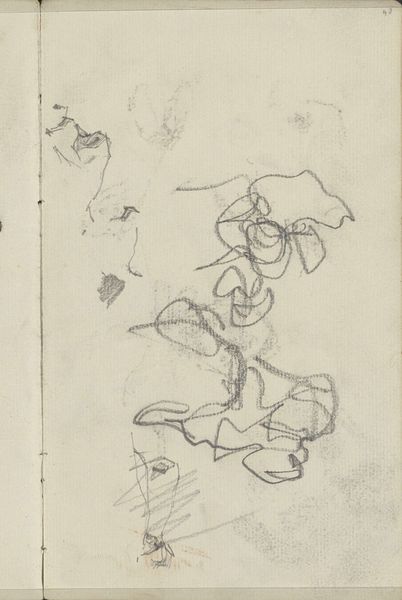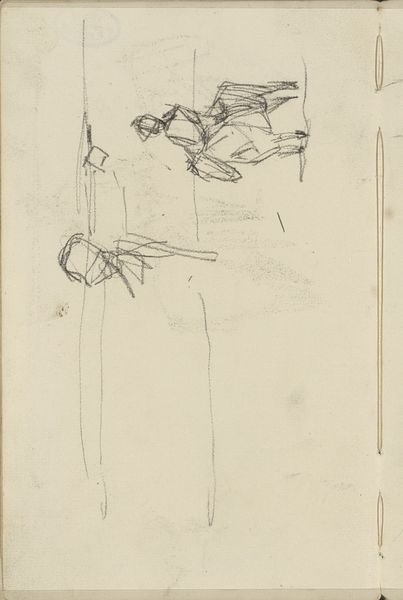
drawing, pencil, graphite
#
drawing
#
animal
#
impressionism
#
pencil sketch
#
landscape
#
pen-ink sketch
#
pencil
#
horse
#
graphite
Copyright: Rijks Museum: Open Domain
Curator: Here we have a work by George Hendrik Breitner, tentatively titled “Ploeg, mogelijk met twee paarden," placing it somewhere between 1884 and 1886. It’s currently held at the Rijksmuseum, rendered in graphite and pencil on paper. My immediate impression is one of swift, urgent movement. Editor: Urgent is spot on. It's a flurry of lines, chaotic but controlled, a captured moment on the brink of disappearing. The plowing scene, if that’s what it is, seems more a ghost than a solid reality. There is something ominous in the energy conveyed in this artwork. It’s more about evoking feeling than portraying the landscape. Curator: Breitner’s focus wasn’t on capturing detailed reality; it was more about seizing a fleeting impression. He found beauty in the ordinary – a street scene, horses, figures in motion, with the intention of presenting raw energy over precision. Editor: And that's the core of the symbol—the horse representing energy, power, the wild spirit. The landscape isn't just a background, it's a reflection of the inner world, charged and raw. This hasty style almost channels some archetypal surge, that dark, earthy, primordial pull. Curator: I like how you’ve introduced this symbolic dimension! Breitner saw himself as “the painter of the people.” So the choice to focus on laborers and working horses definitely elevates this imagery and gives it cultural meaning. His urban scenes, often captured in rain or mist, carry this gritty realism further. Editor: Right, the grittiness is key! There’s also the symbolism of the plow, turning the soil, breaking ground – a potent image of transformation and change. But then, there is an uncertainty about what the plowing even unearths! Curator: Exactly, it all comes back to this constant state of flux. He rejected academic styles for a more direct representation of life's dynamism and social undercurrents. The lines create an overall experience more powerful than any perfectly rendered detail. Editor: I agree completely. This little sketch, with its apparent chaos, opens up into a whole world of elemental symbolism. Thanks to these frenzied lines and half-hidden shapes it resonates far beyond its size and style.
Comments
No comments
Be the first to comment and join the conversation on the ultimate creative platform.
